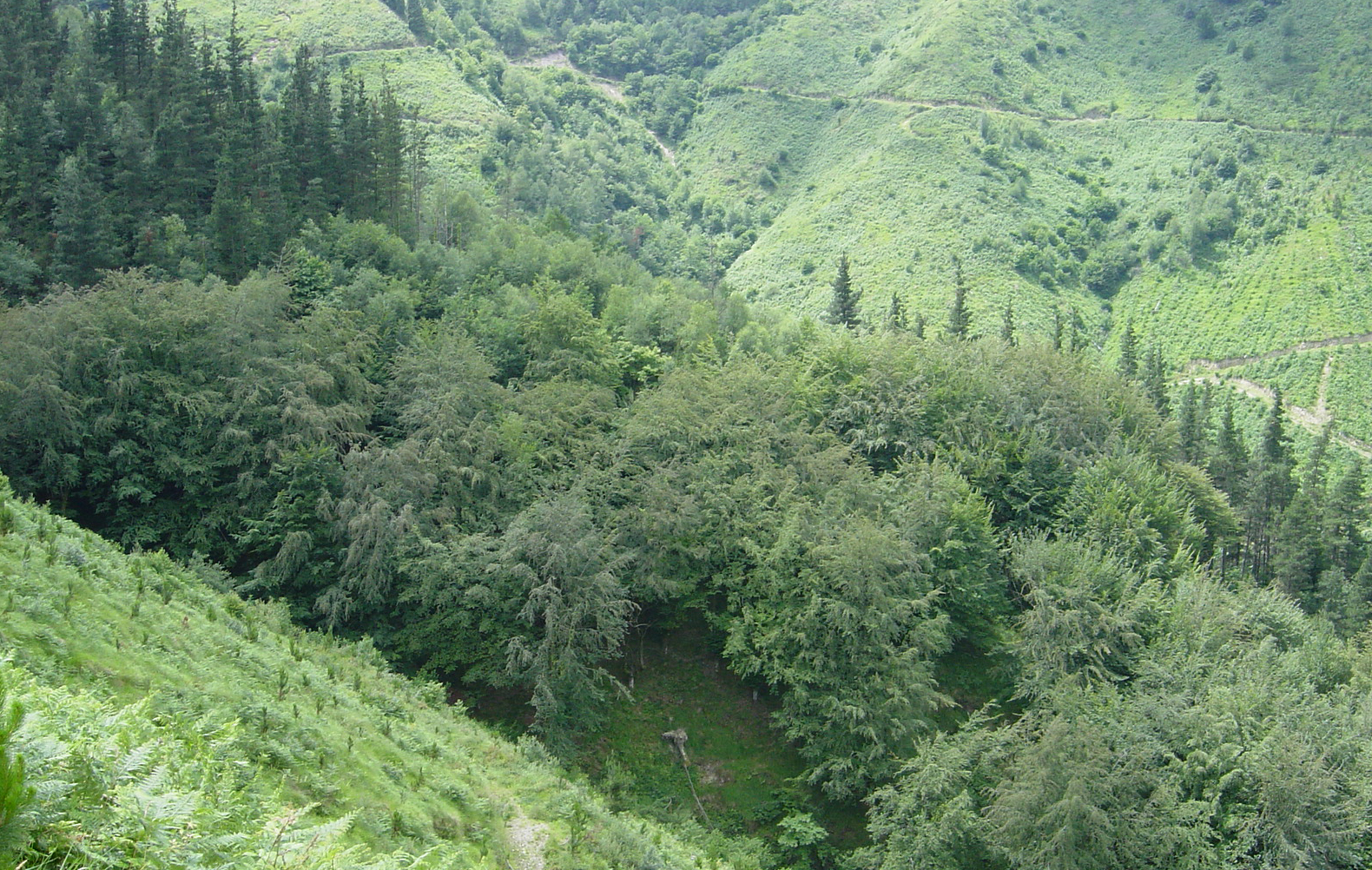Pine plantations have the appropriate conditions for the development of native forest
2013/12/10 Elhuyar Zientzia Iturria: Elhuyar aldizkaria

Pine plantations include tree, helechal, and native herbaceous species, if there are native forests in the area. In this way, it can be achieved that in pine plantations the autochthonous forests, practically without intervention, are subtracted. To this conclusion, the UPV/EHU Landscape, Biodiversity and Ecosystem Services group has reached in a study on pine plantations in Bizkaia. His work has been published in the journal Forest Ecology and Management.
The forest crisis has caused a large number of old pine plantations in Bizkaia. “This has allowed us to see how ecological succession occurs in these environments,” says researcher Ibone Ametzaga. In the last years of pine plantations, when cleans or clareans are not made, seeds coming from nearby forests advance in the conditions offered by pine forests. “We have seen that especially the native trees and ferns are better adapted to these conditions,” added Ametzaga. In addition, they have seen that the older the plantation, the richer the forest that develops under it, and the more resembles the mixed forests of the area.
However, at the 25-30 years of the plantations, Ametzaga stressed that it would be necessary to take other measures to achieve the rich native mixed forests: “To equip the composition of the species with that of their mixed forests: to remove the pines, to introduce species that have not arrived by themselves, etc. This would allow the introduction of the native forest in the short term.”
In addition, this group of researchers has found that their forests contribute much more to the welfare of society than pine plantations. These conclusions have come when the United Nations International Millennium Assessment Programme has been developed in Bizkaia. In addition to the recreational, landscape and educational value of forests, they provide food and wood, capture carbon, participate in water purification, create soil and help to combat erosion, etc. In this sense, native forests “offer a better service, maintaining native biodiversity or accumulating more carbon. At present, however, the mixed forest that dominates the oak (Quercus robur), “only occupies 3% of its natural surface in Bizkaia and Gipuzkoa,” explains Ametzaga.
Gai honi buruzko eduki gehiago
Elhuyarrek garatutako teknologia




